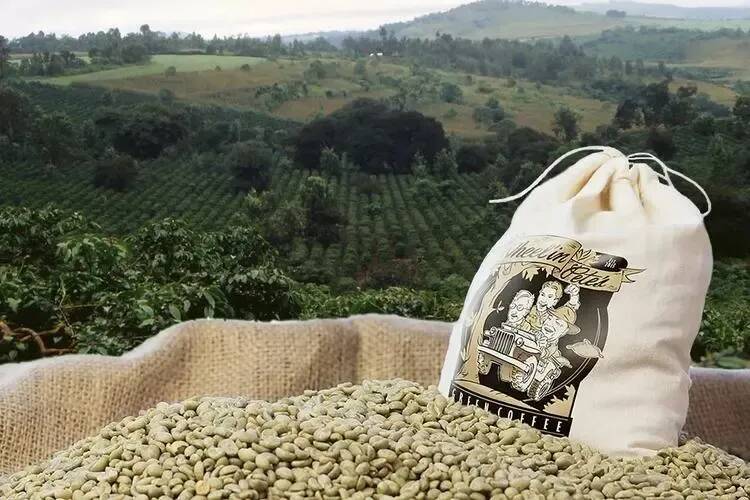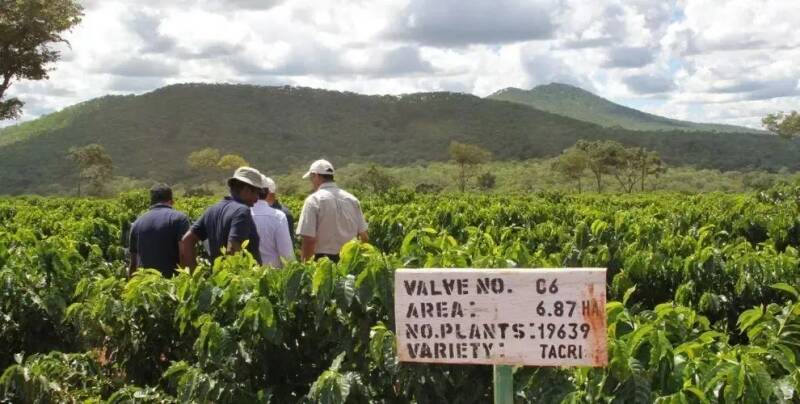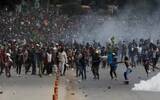Introduction to Mbeya, the coffee producing area of Tanzania, Africa
In Africa, there are many well-known coffee producing countries, such as Ethiopia, Kenya, Rwanda and Tanzania. Although Tanzania is not as famous as neighboring Kenya, it can also produce high-quality coffee.
Coffee first became a cash crop in Tanzania (formerly known as Tanganyika) during German colonial rule. At that time, Arabica coffee trees were mainly planted in Bukoba producing areas, but at that time, Arabica coffee trees were grown in a different way from the local Haya people, so the Haas were reluctant to replace food crops with coffee trees and developed slowly.

After the first World War, the management of the district was transferred to the British. They planted more than 10 million coffee seedlings in Bukoba, but they also clashed with the Hayans, usually uprooting them. Therefore, compared with the Chagga district of Tanzania, the coffee industry here has not developed significantly.
Until the independence of Tanzania in 1961, the focus was on the coffee industry. Since the 1990s, a series of reforms have been carried out in the coffee industry in Tanzania. Unfortunately, a kind of coffee withered branch disease spread at that time in the late 1990s, which greatly reduced the amount of coffee in northern Tanzania. Then the main growing areas were transferred to the south and Mount Kilimanjaro. Thanks to the country's topography and climate, coffee cultivation has become a major agricultural cash crop in Tanzania.

Tanzania is located in eastern Africa, south of the equator, adjacent to many African countries, is a land and sea country. The topography of the country is high in the northwest and low in the southeast, the eastern coast is a lowland, and the western plateau accounts for half of the total area of the country. The East African Rift Valley runs from east to south from Lake Malawi, with Mount Kilimanjaro, the highest peak in Africa.
Due to its proximity to the equator, the eastern coast and inland lowlands have a savanna climate, while the western inland plateau has a tropical mountain climate, with an annual average temperature of 21 ℃-26 ℃. Although the country has less rainfall, with less than 1000 millimeters in 80 per cent of the region, Tanzania has many rivers and lakes and is rich in hydropower resources.
Coffee cultivation in Tanzania is currently divided into nine producing areas, with the relatively well-known ones being Kilimanjaro, Arusha, Ruvuma, Mbeya, Tarime and Kighoma. In Tanzania, 90 per cent of coffee is produced by 450000 small farmers, while the other 10 per cent comes from larger estates, so it is dominated by cooperatives.
Among them, Kilimanjaro ("Kilima" means mountain, "Zaro" means shining) is the most famous. Kilimanjaro is the highest mountain on the entire African continent, mainly composed of three extinct volcanoes, Kibo, Mavenz and Sheila, up to 5895 meters. Coffee is grown at an altitude of 1050-2500 meters.
High enough altitude, volcanic soil, and pure snow-melting water are the most suitable areas for growing coffee. On the front street, there is a washed iron pickup from the Kilimanjaro area, which tastes soft and sour, with citrus, berry, honey and nut flavors, soft tea taste and overall balance.
In addition, there are many coffee producing areas with good quality, such as Mbeya, located around the city of Mbeya in southwestern Tanzania, is the main agricultural capital and trade center in the southwest of the country.
There are many highlands and basins, there are volcanoes such as Mount Lungui, low, hot and dry here, but the highlands where coffee is planted are cool and humid, with an altitude of about 1660 meters above sea level, and fertile soil given by volcanic ash, and there are lakes to the west and southeast, which are rich in water resources, so they can produce high-quality coffee, and there are many well-known cooperatives here, such as the Eyinger Agricultural Marketing Cooperative (Iyenga AMCOS).
Founded in 2003, Iyenga AMCOS collects coffee mainly in the Mbeya region and works with more than 500 farmers a month. And it has a good influence in the local area, all because of advocating democracy very much. All leaders are democratically elected to encourage young people and women to participate in coffee events, collaborative activities, etc., and there are teams responsible for coffee cultivation and processing to ensure quality.
Important Notice :
前街咖啡 FrontStreet Coffee has moved to new addredd:
FrontStreet Coffee Address: 315,Donghua East Road,GuangZhou
Tel:020 38364473
- Prev

Don't buy it! President withdraws tax increase Kenyan people continue to march
According to several Kenyan media reports, on July 16, Kenyan people once again took to the streets to continue demonstrations against the Ruto government. Moreover, in addition to the capital Nairobi, this demonstration was also held in Mombasa and Nakuru.
- Next

Ridiculous! Do you have to pay a deposit before taking up a job during the summer vacation in a cafe?!
▲ Click to pay attention| Daily Boutique Coffee Culture Magazine Coffee Workshop recently reported by Guangdong Today that 14 students of different ages went to a local coffee shop in Meicheng, Meizhou to apply for summer jobs. As a result, they were charged a deposit by the owner before they could go to work to earn pocket money. Students told reporters that they were in social affairs
Related
- Being chased out of the rain in front of Starbucks?! Store: Sheltering from rain under umbrellas poses a safety hazard
- The white moonlight has changed?! Lucky launches "Big Winter Pear American"
- Hand-brewed coffee three-stage method, high-sweet and universal brewing method to share! What does the high sweet water level of hand-brewed coffee mean?
- What is the difference between raw, refined and full espresso coffee? How to extract espresso and taste good?
- A complete list of coffee bean names and their meanings! What is Yejia Shefi coffee? Where is Mantelin coffee?
- What grade does Arida Manor Kaduai coffee beans belong to? What treatment is Arida ASD slow anaerobic sun exposure?
- The milk tea cup becomes smaller?! Overlord Tea Girl launches a new "Return to Yunnan" series
- Accused of selling counterfeit and high-priced coffee beans! Well-known boutique coffee brand "Oukelao" bowed and apologized!
- How to make espresso dumplings? Can I eat coffee and glutinous rice balls together?
- Save the unformed and stagnant powder cakes in one second! What is the problem with stagnant water in the powder bowl of the espresso machine?

